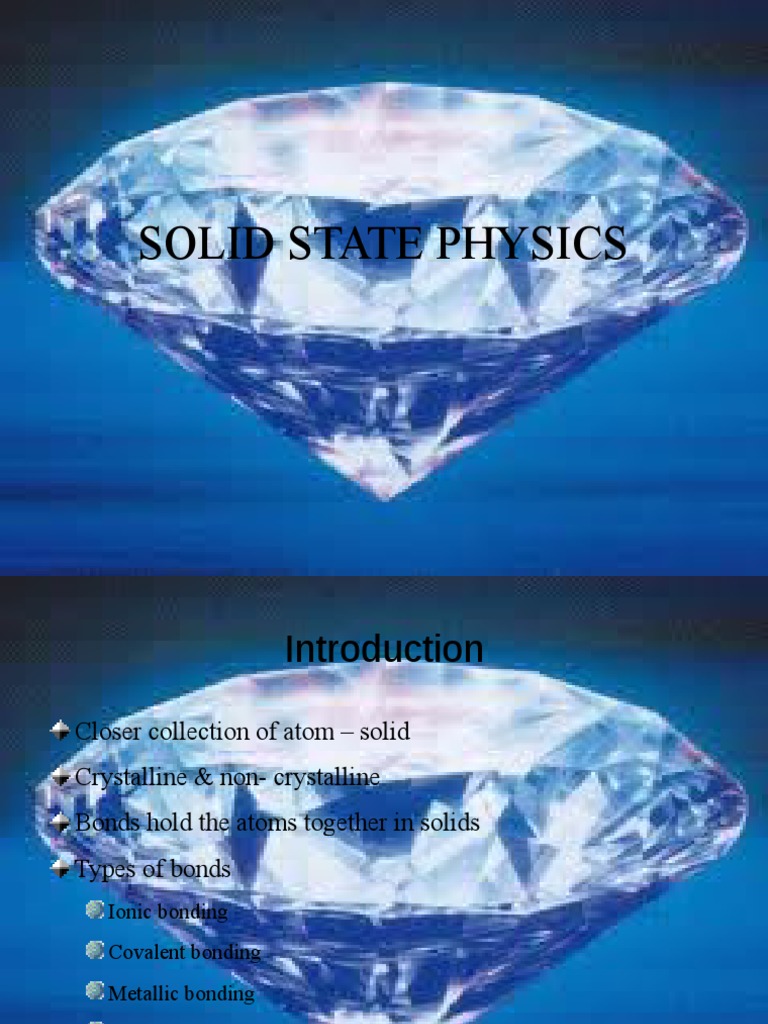Solid-state physics occupies a pivotal position in the tapestry of modern science and technology, weaving together intricate threads of knowledge that underpin various high-tech applications. As we continue to unravel the complexities of materials at the atomic and molecular levels, we encounter the enthralling question: What is the scope of solid-state physics in today’s high-tech world? The exploration of this field not only underscores its immense significance, but also highlights the challenges that arise in the face of rapid technological advancements.
One of the primary domains where solid-state physics exerts profound influence is in the realm of semiconductors. Semiconductors serve as the backbone of modern electronics, a fact that is invariably tied to the principles of solid-state physics. The intricate balance of electron mobility, band structure, and impurity doping revolves around concepts birthed from solid-state studies. This is particularly evident in the development of integrated circuits, the very heart of computing devices. Electronic engineers continuously seek novel materials to enhance the performance of transistors, leading to a relentless pursuit of materials with extraordinary electrical and thermal properties.
Yet, even as semiconductor technology evolves, one might ponder: How can we further optimize efficiency while maintaining cost-effectiveness? The challenge lies in bridging the gap between scientific theoretical models and practical applications. For instance, the emergence of two-dimensional materials such as graphene and transition metal dichalcogenides presents boundless opportunities but also necessitates a comprehensive understanding of their properties through rigorous solid-state physics. Thus, researchers are not merely tasked with material discovery; they must also decipher the underlying mechanisms governing these newfound phenomena.
In addition to electronics, solid-state physics plays an essential role in the development of optoelectronics—a field merging optical and electronic processes. The advent of light-emitting diodes (LEDs) and laser diodes originates from principles delineated in solid-state physics. With the acceleration of technology towards energy-efficient lighting and communication systems, understanding the quantum well structures and bandgap engineering becomes paramount. Herein again lies the challenge: How can researchers and engineers innovate while considering environmental sustainability and reducing energy consumption? Addressing such queries is crucial as society grapples with the intersection of technology and environmental stewardship.
Beyond semiconductors and optoelectronic devices, solid-state physics contributes significantly to the realm of magnetic materials. The study of ferromagnetism, ferrimagnetism, and antiferromagnetism has led to the creation of numerous applications including data storage solutions and magnetic sensors. As the demand for high-capacity and rapid data storage grows, the quest for magnetic materials with novel properties intensifies. The challenge here is pronounced: Can we conjure up new materials that not only surpass the capabilities of existing technologies, but do so with scalability in mind? The implications of such innovations extend to fields like quantum computing, where quantum bits (qubits) rely heavily on advances in solid-state physics.
The implications of solid-state physics extend even further into the field of nanotechnology. As researchers probe the limits of miniaturization, the nanoscale presents unprecedented challenges and opportunities. Materials behave differently at this scale, and phenomena such as quantum confinement must be understood and harnessed. The curious nature of electron behavior in nanostructures prompts significant questions: How does a material’s physical dimensions influence its electrical, thermal, and mechanical properties? More importantly, how can these unique properties be utilized to create next-generation devices? These inquiries urge a multidisciplinary approach, demanding collaboration between physicists, chemists, and engineers.
Moreover, advancements in materials science illuminated by solid-state physics have catalyzed progress in energy storage and conversion technologies. The endeavor to develop efficient batteries and capacitors is crucial in the transition to renewable energy. Understanding the solid-state mechanisms underlying ion transport and electrochemical reactions is vital for enhancing the performance of energy storage systems. Emerging challenges abound, particularly in the scalability of these technologies whilst ensuring that they are resource-efficient and environmentally sound. Could the answer lie in the innovative realm of solid-state batteries, which promise higher energy densities, improved safety, and reduced environmental impact?
As the synthesis of novel materials progresses, the challenge of characterizing and optimizing these substances looms large. Techniques such as X-ray diffraction, neutron scattering, and electron microscopy are crucial in elucidating material properties. However, the rapid pace of discovery often outstrips the development of characterization techniques. Can we evolve our methodologies to keep pace with innovation? The answers to these questions may very well dictate the trajectory of material science in solid-state physics.
Furthermore, the exploration of superconductivity remains one of the forefront challenges within solid-state physics. The phenomenon of superconductivity holds the promise for revolutionary applications, including lossless electrical conduction and the advancement of magnetic levitation technologies. However, the quest for high-temperature superconductors continues to pose significant challenges, hindered by our incomplete understanding of the underlying mechanisms. Will breakthroughs in solid-state physics pave the way for practical superconductors that can operate at ambient temperatures?
In summation, the scope of solid-state physics encompasses a vast array of transformative technologies vital for our high-tech world. From semiconductors to nanotechnology, and from magnetic materials to superconductors, solid-state physics not only provides the scientific groundwork for innovation but also frames the very challenges that propel researchers forward. The playful question remains: Are we ready to confront these challenges head-on and harness the potential of solid-state physics for a brighter, more sustainable future? The answer might very well define the forthcoming era of technological advancement, with far-reaching implications for society at large.








